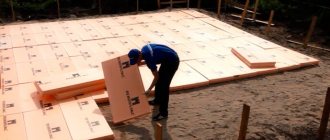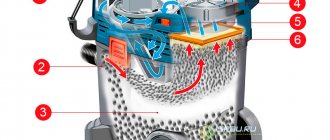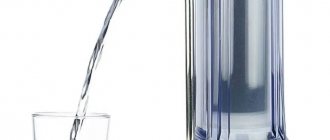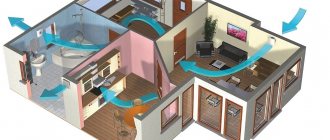Hygrometers are devices whose main function is to measure humidity. This indicator affects human health, the operation of many devices, and the properties of materials, so the need to control it may arise in various industries. During the use of the hygrometer, various principles of operation were developed and became widespread.
Types of hygrometers
There are several methods for measuring humidity. Absolute humidity characterizes how much water vapor that is currently contained in a cubic meter of atmosphere weighs. Relative humidity is a characteristic that shows how close the amount of moisture contained in the air at the time of measurement is to the maximum possible for a given temperature. It is measured as a percentage and is often used to describe the weather conditions. Finally, in addition to absolute and relative humidity, a hygrometer can determine the dew point - the temperature at which water vapor contained in the air condenses on a cold surface.
As a rule, measuring equipment determines one of the three listed indicators. However, there are formulas that allow you to obtain the remaining two using calculations. So, regardless of whether your hygrometer measures dew point, absolute or relative humidity, you can calculate all three when needed.
During the existence of the hygrometer, several methods have been developed to determine air humidity. They differ in the accuracy of the data obtained and in the scope of application.
Hair hygrometers measure by changing the length of a fine hair in response to the amount of moisture it comes into contact with. The device has certain limitations - measurements are carried out only in the range from 30 to 80%. Humidity indication is carried out through a simple mechanism. Changes in microclimate affect the hair, the tension of which increases or decreases. It acts on the pulley to which it is connected. The pulley turns and moves the pointer along an arc-shaped scale. Since the operation of such a hygrometer is determined solely by the laws of mechanics, it does not require an external power source.
To determine the absolute humidity of the air, a weighing hygrometer is used. It consists of tubes bent in the shape of a U, connected to each other and filled with a substance with good hygroscopicity, that is, it actively absorbs moisture from the air. A fixed amount of air is blown through the described tube system. The moisture contained in it settles on the contents of the tubes, and their mass changes. The difference between the mass of the tube system before and after taking measurements allows you to calculate how much moisture is present in a given volume.
The operation of a mechanical (ceramic) hygrometer is based on a change in the electrical resistance of a mass containing ceramic and metal components. The base is silicon, clay or kaolin, to which metal oxides are added. The result is a mixture that noticeably changes resistance in response to changes in humidity. Hygrometers of this type are often used in everyday life.
A condensation hygrometer provides more accurate data than the mechanical instruments described above. The design of such a device includes a cooled surface on which moisture condenses. The built-in thermometer records the temperature at which condensation occurred, and a narrow beam of light directed at the mentioned surface allows you to accurately record the moment of condensation formation. Based on this data, the electronics calculates the relative humidity and displays it on the display. This principle of operation allows you to reduce the error to a minimum, performing measurements in the range from 0 to 100%.
Electronic hygrometers can use a variety of operating principles, including:
- measuring the electrical conductivity of air, which depends on the moisture it contains;
- determination of dew point by optoelectronic method;
- measuring the electrical resistance of salts or polymers, which changes depending on humidity;
- monitoring changes in the capacitance of a metal oxide or polymer capacitor.
All of these methods provide more accurate data than using a mechanical hygrometer. An electronic hygrometer gives less error and is especially convenient if further processing of the collected data is necessary.
A psychrometric hygrometer is used to measure the relative humidity of the air by comparing the readings of two thermometers, one of which is placed in a humid environment. Since the wet one will cool due to the evaporation of the liquid, it will show a lower temperature than the control one. Moreover, the less moisture in the air, the more the thermometer readings will differ. Relative humidity is determined using a special table, and on its basis, if necessary, absolute humidity is calculated.
Based on this principle, several types of psychrometers operate:
- The stationary one is a simple structure mounted in a meteorological booth. Two thermometers are mounted on a tripod, one of which is in contact with a damp cloth. Readings and calculations are done manually.
- The remote is constructed using temperature transducers such as thermistors or thermocouples. For example, such a psychrometer may consist of two manometric thermometers, one of which is humidified. A remote psychrometer can be manometric or electrical.
- The aspiration thermometer consists of two thermometers mounted in a protected housing and blown by an aspirator fan. This design allows for the highest measurement accuracy.
GOST
For some types of hygrometers, GOSTs have been developed that regulate the methods of their verification:
- GOST 8.472-2013 – for piezosorption hygrometers.
- GOST 8.547-86 regulates the verification scheme and primary standard for measuring instruments regarding gas humidity, including hygrometers and hygrographs.
- GOST R 8.881-2015 regulates verification methods for moisture meters of lumber and wood.
- GOST 8.519-84 – for diel-metric moisture meters of building materials.
- GOST R 8.781-2012 – for moisture meters of grain and grain products.
The following GOSTs regulate technical requirements and conditions:
- GOST R 8.758-2011 – for coulometric hygrometers.
- GOST 29027-91 – test methods and general technical requirements for moisture meters of bulk and solid substances.
- GOST 21196-75 – for neutron moisture meters.
Instruments included in the State Register of SI, used for measurements in the field of GROEI, must undergo mandatory annual periodic verification, which, like the primary verification, is carried out by special accredited bodies.
Since mechanical hygrometer models are sensitive to vibrations and shocks, after purchase they require calibration, which is performed with a special screw, usually located on the back of the case.
The meaning of this action is to place the device in an environment with a previously known humidity, after which its value is adjusted.
The quality of the hygrometer can be guaranteed, first of all, by the SI type approval certificate.
Marking
Moisture meters are marked in accordance with GOST 26828. The marking must contain the manufacturer's trademark, the designation of the hygrometer, its serial number and date of manufacture, as well as the State Register mark.
The consumer packaging, that is, the packaging, indicates the designation of the device and the trademark.
If the moisture meter has passed acceptance tests, a seal is placed on it.
Scope of application of hygrometers
Problems requiring humidity control often arise in various industries. Modern manufacturers produce hygrometers designed for specific specific applications, which means they are best suited for use in a particular field of activity. Here are just a few examples of situations that can be solved using these measuring instruments:
- For long-term storage of agricultural products, for example, in vegetable stores or granaries, it is necessary to maintain temperature and humidity conditions. This can be achieved by constantly monitoring the microclimate using a hygrometer.
- Many medications require special storage conditions and may lose their properties if they are exposed to excess humidity.
- A hygrometer is also necessary in a library, since books, especially old ones, deteriorate much faster in a humid microclimate. Materials that are many years old can deteriorate from excess moisture, which means that air humidity needs to be controlled to ensure optimal storage conditions.
- The need to control the moisture content of materials often arises at a construction site. For example, the degree of drying of wood is checked to determine whether and how it can be used as a building material. There are also specialized hygrometers designed to determine the moisture content of concrete.
- Checking the moisture content of materials is often carried out during the production of furniture, because a product made from too damp or overdried wood was produced in violation of the technology and, most likely, will last much less.
Content
- What is a room hygrometer?
- Hair hygrometer
- Film hygrometer
- Psychrometric hygrometer VIT-1
- Psychrometric hygrometer VIT-2
- Electronic hygrometer
- Electrolytic electronic hygrometer
- Ceramic electronic hygrometer
- Heated Electrolytic Electronic Hygrometer
- How much does a hygrometer cost?
- Where can I buy a hygrometer?
And if with temperature control everything is more or less clear - a change in the volume of the coolant with a change in temperature for mechanical devices and a change in the conductivity of a thermocouple with a change in temperature for electronic devices - then with control of relative humidity it is not so simple.
Let's look at the main types of measuring instruments designed to control the relative humidity of the environment, which are most widely used in our country.
Portable
The main areas of application for portable hygrometers are the oil and gas and petrochemical industries. Using such a device, the microhumidity of gas in cylinders or pipelines is determined. They can operate over a wide temperature range and output humidity in different units of measurement. The compactness of the hygrometer allows you to easily take measurements at the right points.
What relative humidity should be in a living space?
Medical scientists have found that in order for a person to feel most comfortable, the room temperature should be +20 ° C and the humidity from 30 to 45%.
If the relative humidity (φ, %) is below the established range, the air is considered dry. A person who will be in such a room will feel a dry throat, he will begin to cough, and his hair and skin will become dry. Houseplants will also be susceptible to disease and will likely dry out.
On the contrary, if the actual relative humidity exceeds the upper permissible level, such a room will feel damp, and excess moisture will saturate the furniture, walls, books, bed and things. People with respiratory diseases especially suffer in damp rooms.
Humidity in the house is regulated using special dehumidifiers or humidifiers, as well as other climate control equipment, such as air heaters, air conditioners and gas boilers. It is important to know the current state of this parameter, and for this it needs to be periodically checked with a hygrometer.
Stationary
Stationary hygrometers allow not only to take measurements, but also to control technological processes. The design of the device allows you to detect even a small percentage of microhumidity. The sensor heating system makes measurements more accurate because it prevents exposure to drying agents that may be contained in the gas mixture.
↑ Assembling a humidity and temperature meter
While assembling the device, I was so engrossed in enthusiasm that I did not notice how my desktop turned into a DUMP!
Don’t think that I constantly sit in such a mess, but when I start creating, then yes, one table is not enough for me!
The case was taken from an Ethernet splitter, the printed circuit board was etched on both sides, the main part of the electronics is on the front, and the sensor and a box for inserting batteries are on the back.
Actually, this is what happened in the end.
Scope of application of professional hygrometers
Portable and stationary humidity measuring instruments are used primarily in the oil and gas and chemical industries. However, the scope of their use is not limited to this. A hygrometer may be needed wherever you are supposed to work with non-aggressive gas mixtures and you need to monitor their condition. Thanks to this, equipment for measuring the percentage of moisture in the air is used at nuclear power plants, in the production of microelectronics, and in the energy sector. They are also used to control the drying process of natural gas.
Professional hygrometers are used to solve a wide range of problems related to the organization of various production processes. In particular, they become indispensable if necessary:
- provide a given level of humidity in the room, for example, for storing products under certain conditions;
- assess the humidity in the production area for labor protection purposes;
- ensure the normal functioning of electrical equipment for various purposes;
- provide the level of humidity required for the implementation of a specific production process.










